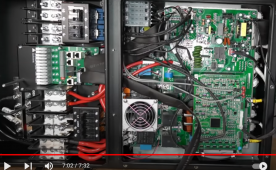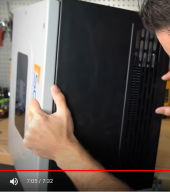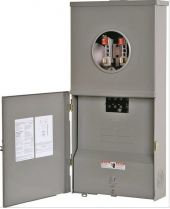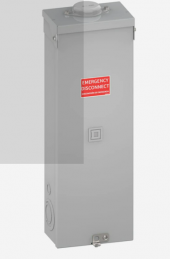The nice teamster truck driver that delivered some stuff, agreed to take 5 minutes and followed me down to my basement, and helped lift the 15k onto the french cleat, so that part of my day went well. Prior to his arrival/help I was investigating use of my engine hoist or my cable come-along bolted to basement ceiling, with a cargo net to support the solark lift effort.That would be the utility meter?
(In my case, the underground feed goes into a box with utility meter, has two busbars, L1 & L2, that 200A Murray breaker plugs onto, has one Neutral busbar with screw to box. Two lugs, one for ground rod and one for neutral wire.)
Simple meter socket of course just lets neutral feed through, doesn't connect.

How does a 140 pound weakling hang a 140 pound inverter?
When I hung my original 2.5 kW SWR-2500U inverters 17 years ago, I was probably stronger and they were only 75 lbs. I was able to carry them up a stepladder and hang them head high. Taking them down to upgrade was doable, but difficult When I hung 75 lb transformerless 10000TLUS under the deck...diysolarforum.com
I am now wondering if I go to my outside garage wall , and intercept the 200A meter supplied home run going through the cement and conduit into my basement and insert the fused cut off switch there, does that change anything I can do downstream?
Is my main panel now a "sub panel" that I can splice the 4/0 al feed wires inside?
Would be great if I now treat my 200A main panel as a "sub panel" enclosure, and insert polaris lugs to make the main feed wires longer to go to the extra equipment I am installing in basement? (Xfer switch, Solark).
Figuring out some way to AVOID having to relocate the entire 200A main panel, that meets code would be very nice.
Or is the code such that when your main feed enters a large 200A panel it can only go one place , on the top lugs of the panel, right next to the main 200A circuit breaker no extension or re-direction allowed.
Last edited:







